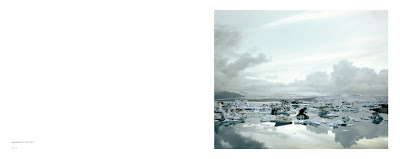Sans Titre, M. Bertillion. By Stéphanie Solinas. RVB Books, 2011. 96pp. (46pp. to be cut), illustrated throughout, 19x26,6cm. Edition of 250 signed & numbered copies. Images from here and here. An interesting look at identity, by deconstructing the man who in his search for identification "deconstructed" us by inventing Anthropometry, the scientific study of the measurements and proportions of the human body.
Book
description:
"By fixing the form of identity,
Alphonse Bertillon modified our faces. From an eminently personal element, he made a tool of the State, an instrument of identification: a gridded, readable, occulted, talkative, divided, synthetic surface; a necessary, sufficient summary of the multiple realities of an individual.
From this heritage, on the surface of every one of our contemporary faces, established as interfaces between individual and society where identification becomes a machine of government, subsists, barely blunted, the searching face of Alphonse Bertillon.
Through assembling the elements of this book, the possibility is given to reconstitute, for oneself, the face of 'Monsieur Bertillon', as he was called by the operators of the Paris Police Prefecture on his identification sheet established in 1891 in order to promote his identification system.
Following the indications given on the sheet,
Stéphanie Solinas coloured the photographs of the inventor of judicial identity seen full face and in profile. Then, through software developed by a Cambridge computer scientist specialized in the techniques of facial analysis, she transformed Monsieur Bertillon’s double portrait in multiple facets of paper to be cut, folded and glued to form a mask in his effigy.
Based on the biography Life of Alphonse Bertillon, Inventor of Anthropometry, published in 1941 by his niece Suzanne, Stéphanie Solias has identified the significant places of Monsieur Bertillon’s course.
These stories and places she explored through photography bear witness to the Bertillon’s bodily existence and to his previous life, when his face still belonged only to himself, like so many elements from which each person may compose a face for himself, and an image of Alphonse Bertillon’s identity."













































